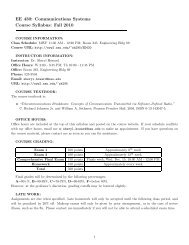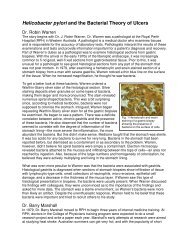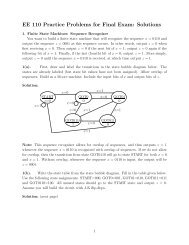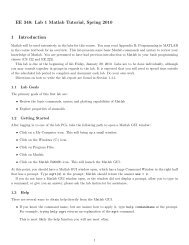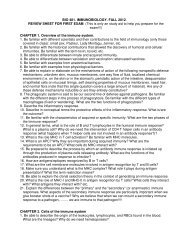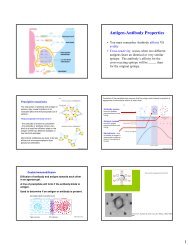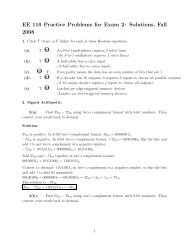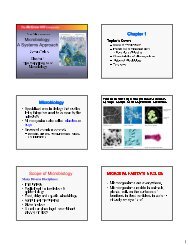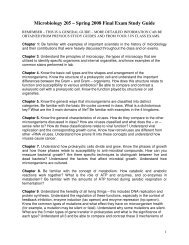Chapter 7 Microbial Growth Binary fission Steps in Binary Fission ...
Chapter 7 Microbial Growth Binary fission Steps in Binary Fission ...
Chapter 7 Microbial Growth Binary fission Steps in Binary Fission ...
- No tags were found...
You also want an ePaper? Increase the reach of your titles
YUMPU automatically turns print PDFs into web optimized ePapers that Google loves.
Obligate aerobe• Requires oxygen for metabolism• Possess enzymes that can neutralizethe toxic oxygen metabolites– Superoxide dismutase andcatalase• Ex. Most fungi, protozoa, andbacteriaFacultative anaerobe• Does not require oxygen formetabolism, but can grow <strong>in</strong> its presence• Dur<strong>in</strong>g oxygen limitation states, anaerobicrespiration or fermentation occurs• Possess superoxide dismutase andcatalase• Ex. Gram negative pathogensObligate anaerobes• Cannot use oxygen for metabolism• Do not possess superoxide dismutaseand catalase• The presence of oxygen is toxic to thecell• Ex - dental pathogens, <strong>in</strong>test<strong>in</strong>alpathogens, deep <strong>in</strong> tissuespHpH - negative logarithm of thehydrogen ion concentration of anaqueous solution• Most cells grow best between pH 6 - 8• Exceptions would be acidophiles (pH 0)and alkal<strong>in</strong>ophiles (pH 10).Osmotic pressure• Halophiles• Require high salt concentrations• Withstand hypertonic conditions• Ex. Halobacterium• Facultative halophiles– Can survive high salt conditions but isnot required– Ex. Staphylococcus aureusOther factors?• Barophiles – withstand highpressures• Spores and cysts- can survive dryhabitats5





